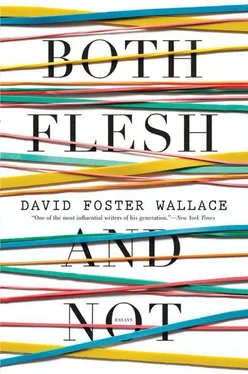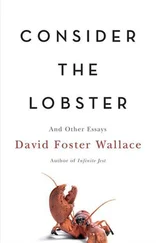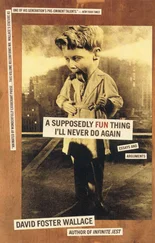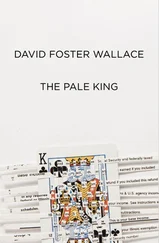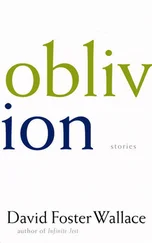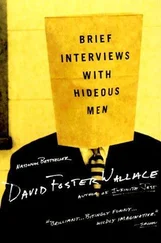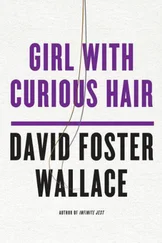This schism between young writers and their older critics probably extends to the whole issue of strategic reference to “popular culture” in literary fiction. The artistic deployment of pop icons — brand names, television programs, celebrities, commercial film and music — strikes those intellectuals whose consciousness was formed before the genuine Television Age as at best frivolous tics and at worst dangerous vapidities that compromise fiction’s “seriousness” by dating it out of the Platonic Always where it properly resides. A fine and conscientious writing professor once proclaimed to our class that a serious story or novel always eschews “any feature that serves to date it,” to fix it in history, because “literary fiction is always timeless.” When we protested that, in his own well-known work, characters moved about in electrically lit rooms, propelled themselves in autos, spoke not Anglo-Saxon but post-WWII English, inhabited a North America already separated from Africa by continental drift, he amended his ruling’s application to those explicit references that would date a story in the transient Now. Pressed by further quibbling into real precision, his interdiction turned out really to be against what he called the “mass-commercial-media” reference. At this point, I think, trans-generational discourse breaks down. For this gentleman’s automobiled Timeless and our F.C.C.’d own were different. Time had changed Always.
Nor, please, is this stuff a matter of mere taste or idiosyncrasy. Most good fiction writers, even young ones, are intellectuals. So are most critics and teachers (and a surprising number of editors). And television, its advertising, and the popular culture they both reflect and define have fundamentally altered what intellectuals get to regard as the proper objects of their attention. Those cognoscenti whose values were formed before TV and advertising became psychologically pandemic are still anxious to draw a sharp distinction, à la Barbara Tuchman, between those sorts of things that have genuine “quality” and are produced and demanded by people with refined tastes, on one hand, and those sorts of things that have only “popularity” or “mass appeal” and are demanded by the Great Unwashed and cheerfully supplied by those whom egalitarian capitalism has whored to the lowest of denominators, the democratic market, on the other. The enlightened older aesthete, erudite and liberal, weaned let’s say between 1940 and 1960, is able to operate from a center of contradiction between genuine refinement and genuine liberalism that advertising scholars like Martin Mayer had already begun to deride by the fifties’ end:
The great bulk of advertising is culturally repulsive to anyone with any developed sensitivity. So are most movies and television shows, most popular music, and a surprisingly high proportion of published books…. But a sensitive person can easily avoid cheap movies, cheap books, and cheap art, while there is scarcely anyone outside the jails who can avoid contact with advertising. By presenting the intellectual with a more or less accurate image of the popular culture, advertising earns his enmity and calumny. It hits him where it hurts worst: in his politically liberal and socially generous outlook — partly nourished on his avoidance of actual contact with popular taste.
I claim that intellectuals of the New Generation for whom C.Y. writers are supposed to be voices can no longer even wrap their minds around this kind of hypocrisy, much less suffer from it. Not that this “enlightenment” is earned, or even necessarily a good thing. Because it’s not as though television and advertising and popular entertainments have ceased to be mostly bad art or cheap art, but just that they’ve imposed themselves on our generation’s psyches for so long and with such power that they have entered into complicated relations with our very ideas of the world and the self. We simply cannot “relate to” the older aesthete’s distanced distaste for mass entertainment and popular appeal: the distaste may well remain, but the distance does not.
And, as the pop informs our generation’s ways of experiencing and reading the world, so too will it naturally affect our artistic values and expectations. Young fiction writers may spend hours each day at the writing table, performing; but we’re also, each and every day, part of the great Audience. We’re conditioned accordingly. We have an innate predilection for visual stimulation, colored movement, a frenetic variety, a beat you can dance to. It may be that, through hyper- and atrophy, our mental capacities themselves are different: the breadth of our attentions greater as attention spans themselves shorten. Raised on an activity at least partly passive, we experience a degree of manipulation as neutral, a fact of life. However, wooed artfully as we are for not just our loyalty but our very attention, we reserve for that attention the status of a commodity, a measure of power; and our choices to bestow or withhold it carry for us great weight. So does what we regard as our God-given right to be entertained — or, if not entertained, at least stimulated: the unpleasant is perfectly OK, just so long as it rivets .
As one can see popular icons seriously used in much C.Y. fiction as touchstones for the world we live in and try to make into art, so one might trace some of the techniques favored by many young writers to roots in our experience as consummate watchers. E.g., events often refracted through the sensibilities of more than one character; short, dense paragraphs in which coherence is often sacrificed for straight evocation; abrupt transitions in scene, setting, point of view, temporal and causal orders; a surfacy, objective, “cinematic” third-person narrative eye. Above all, though, a comparative indifference to the imperative of mimesis, combined with an absolute passion for narrative choices that conduce to what might be called “mood.” For no writer can help assuming that the reader is on some level like him: already having seen, ad nauseum, what life looks like, he’s far more interested in how it feels as a signpost toward what it means.
The technical coin, too, has a tails. For instance, it’s not hard to see that the trendy Ultraminimalism favored by too many C.Y. writers is deeply influenced by the aesthetic norms of mass entertainment. Indeed, this fiction depends on what’s little more than a crude inversion of these norms. Where television, especially its advertising, presents everything in hyperbole, Ultraminimalism is deliberately flat, understated, “undersold.” Where TV seeks everywhere to render its action either dramatic or melodramatic, to move the viewer by displaying constant movement, the Minimalist describes an event as one would an object, a geometric form in stasis; and he always does so from an emotional remove of light-years. Where television does and must aim always to please, the Catatonic writer hefts something of a finger at subject and reader alike: one has only to read a Bret Ellis sex scene (pick a page, any page) to realize that here pleasure is neither a subject nor an aim. My own aversion to Ultraminimalism, I think, stems from its naive pretension. The Catatonic Bunch seem to feel that simply by inverting the values imposed on us by television, commercial film, advertising, etc., they can automatically achieve the aesthetic depth popular entertainment so conspicuously lacks. Really, of course, the Ultraminimalists are no less infected by popular culture than other C.Y. writers: they merely choose to define their art by opposition to their own atmosphere. The attitude betrayed is similar to that of lightweight neo-classicals who felt that to be non-vulgar was not just a requirement but an assurance of value, or of insecure scholars who confuse obscurity with profundity. And it’s just about as annoying.
Читать дальше
